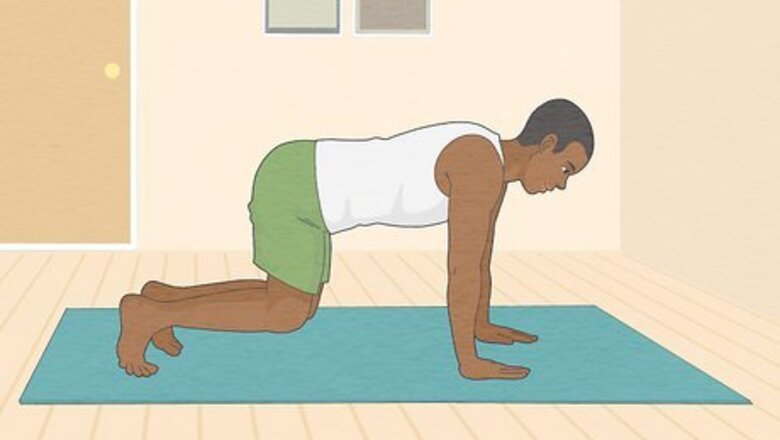
views
Proper Push-Up Form

Start down on all fours with your hands just wider than your shoulders. Find a comfortable spot on the floor to exercise and get on your hands and knees. Put your palms flat against the ground so they’re directly below your shoulders. Point your fingers point straight ahead. Look straight down, and try your best to keep your head and neck in line with your back. Do push-ups on an exercise mat to cushion your hands and wrists so they don’t get sore.
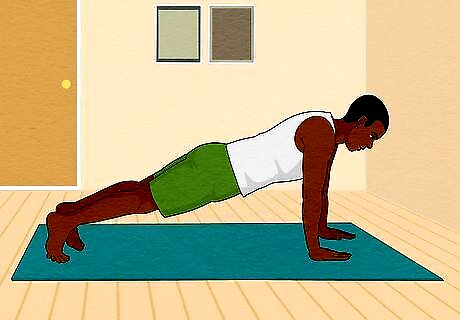
Extend your legs so they form a straight line with your back. Walk your feet back as far as you can. Position your feet right next to each other or a few inches apart, and balance your weight on the balls of your feet. Keep your legs and back as straight as possible throughout your entire set of push-ups. Avoid raising your hips too high or letting them sag too low so that your body goes out of line.
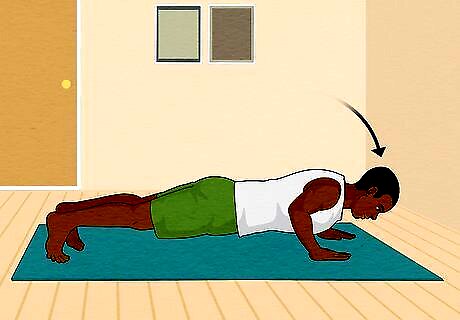
Lower yourself to the floor until your elbows are at 90 degrees. Engage your core and breathe in as you bend your elbows. Keep your back and legs straight as you bring your body down toward the ground. Stop when your chest is about 2–3 inches (5.1–7.6 cm) from the floor. Try to take about 2 seconds to lower yourself down so you have more control over your movements.
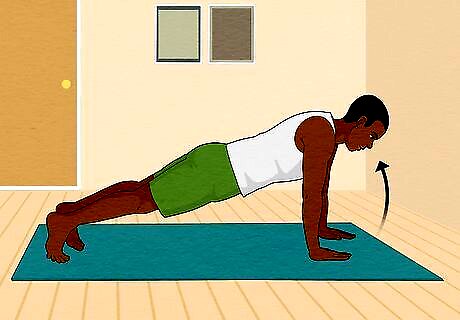
Push yourself back up until your arms are straight. Breathe out as you push your hands firmly against the floor. Lift your body up without bending your knees, letting your hips sag, or raising your hips up. Once you straighten out your arms and are back in your starting position, you’ve completed 1 rep! Avoid locking your elbows when you return to your starting position since you could risk injuring them. If your arms start shaking or you can’t fully get back into your starting position, don’t sweat it. Try putting your knees down to make it easier or lower yourself back to the floor and take a break before trying again.
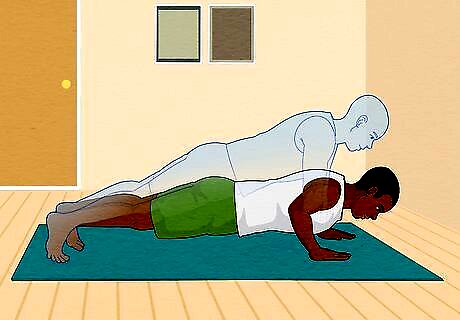
Try to do as many push-ups as you can with good form. See how many push-ups you can do in a row without breaking your form to find a good starting point. Add the exercise to your routine, and take a rest day between each time you do them. As the push-ups start getting more manageable, try adding more reps or additional sets to your routine to challenge yourself and build more muscle. For a good starting point, try doing 5–10 push-ups at a time. Once that starts feeling easy, try adding 5 reps at a time.
Advanced Variations

Do diamond push-ups to work your triceps. Get into your starting push-up position. Rather than keeping your hands shoulder-width apart, position them directly underneath your chest so your thumbs and index fingers form a diamond shape. Lower your body down so it’s about 2 inches (5.1 cm) off the floor and your chest is right above your hands. Then, push yourself back up again. Placing your hands closer together makes you support more weight with your arm muscles so you build them up faster.
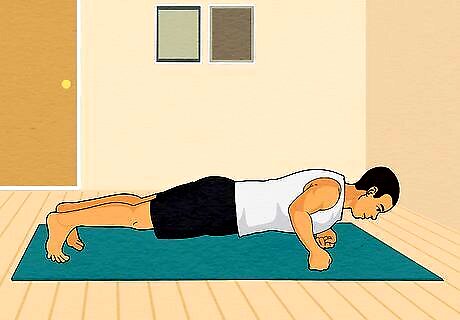
Try knuckle push-ups to strengthen your hands and wrists. Rather than supporting yourself on your palms, make a fist and balance on your knuckles. Slowly lower yourself down so your wrists and hands stay straight. Knuckle push-ups are great if you’re trying to condition your hands for boxing or martial arts.
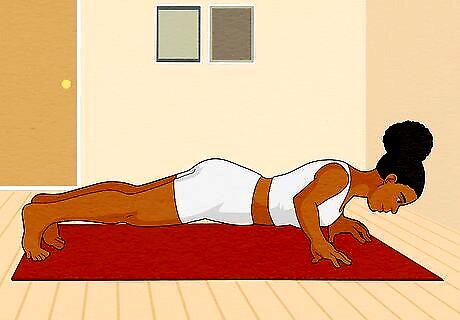
Do fingertip push-ups to build up your grip strength. Support your weight on the pads of your fingers instead of putting your palms fully on the floor. Do your best to avoid touching your palms against the floor throughout your entire rep. Fingertip push-ups are more challenging since most of your bodyweight is supported by your fingers. This exercise is great for boosting the strength in your hands for things like boxing and rock climbing.
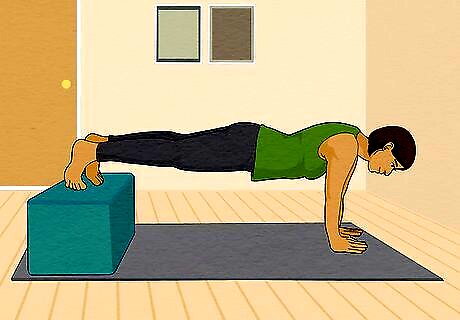
Target your lower chest muscles with elevated leg push-ups. Put a workout bench or chair behind your feet. When you get into your starting position, keep your hands on the floor but put the balls of your feet flat onto the bench or chair. Bend your elbows and lower yourself to the floor like you normally would for a push-up, and straighten your arms to finish your rep. An elevated leg push-up puts more bodyweight on your chest, arms, and shoulders so you feel a more intense workout.
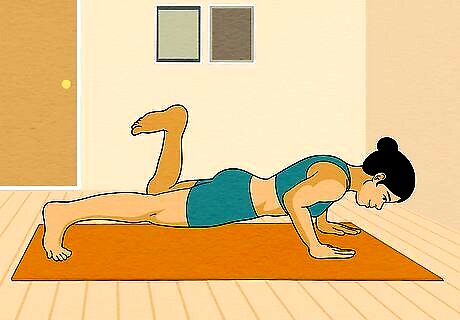
Try some scorpion push-ups to increase the weight you’re lifting. Get into your standard push-up position to start. When you lower yourself to the floor, lift up your right foot and try to touch your heel to your left glute. When you push yourself back up, put your foot back down on the ground. Either do a full set focusing on one leg, or alternate between legs with each rep, bringing your left heel to your right glute. Lifting your leg off the ground puts more bodyweight on your arms, and it engages the sides of your core even more. Avoid resting your foot on your leg or glute since you won’t get a full workout. Hold your foot in the air to keep your muscles engaged.

Do Spider-Man push-ups for a full-body workout. Start in a basic push-up position. As you bend your elbows, lift your left leg off the ground and try to touch your knee to your elbow. When your elbows are bent to 90 degrees, hold the position for a second before pushing back up. Do a set for each leg individually, or alternate between your legs. Spider-Man push-ups make you support more bodyweight with your arms and shoulders, plus they work your lower abs and sides more effectively.
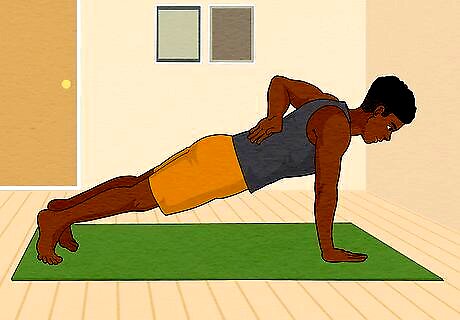
Do one-armed push-ups to work your arms individually. Position your feet wider than your shoulders so you have extra stability and balance. Put your hand on the floor right below your chest and keep the arm you aren’t using behind your back. Try to do the same amount of reps with each hand so you build muscle evenly. Work up to one-armed push-ups by putting one of your hands on a yoga block or step platform. That way, you’re supporting most of your weight with the hand on the floor.
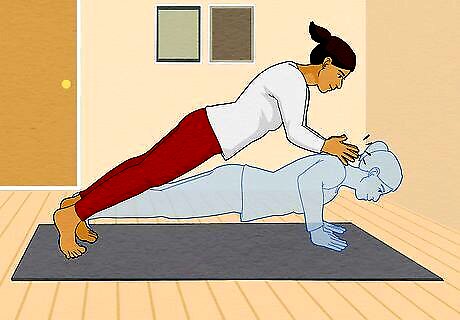
Perform clap push-ups for an intense plyometric exercise. Perform the first half of your push-up like you normally would with a slow and controlled movement. When you reach the bottom of the movement, push yourself off the floor with enough force to lift you off the ground. Try to clap your hands underneath your chest and catch yourself on the way back down. Try this on a soft exercise mat so you don’t hurt yourself if your hands slip.
Easier Variations

Try a knee push-up so you don’t lift as much weight. When you’re in the starting position for your push-ups, keep your knees on the ground and lift your feet in the air. Keep your back and hips in line with your thighs so your core stays engaged. Then, just perform your push-ups as normal. Putting your knees against the ground supports more weight, so you aren’t pushing as much bodyweight back up at the end of your rep.
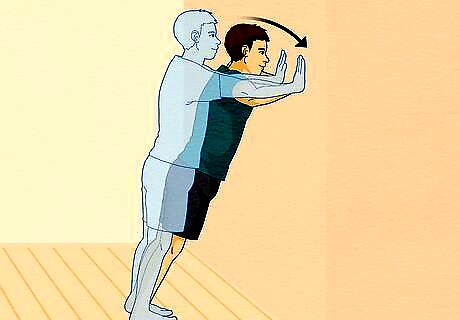
Perform a wall push-up if basic reps strain your back. Rather than doing push-ups on the ground, stand just farther than arm’s length from a wall. Lean forward and put your palms flat against the wall at shoulder height. When you’re ready to start, bend your elbows to move your body closer to the wall. Then, push yourself away from the wall to straighten your arms again. Wall push-ups only use about 36–45% of your bodyweight compared to 50–75% for standard push-ups.
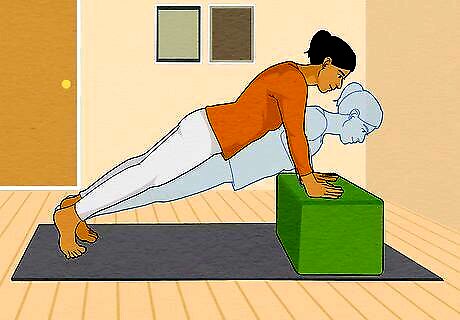
Do an incline push-up with a chair or bench to reduce resistance. Put your hands shoulder-width apart on the edge of a sturdy chair, table, or workout bench. Lean your body forward so it forms a 45-degree angle to the floor. Try doing a set of push-ups at an incline to make it feel easier. Use smaller inclines as the exercise gets easier so you can continue challenging yourself and build up to doing a basic push-up. Stack step platforms on top of each other so you can easily control and adjust the height of the incline you’re using during your push-ups.
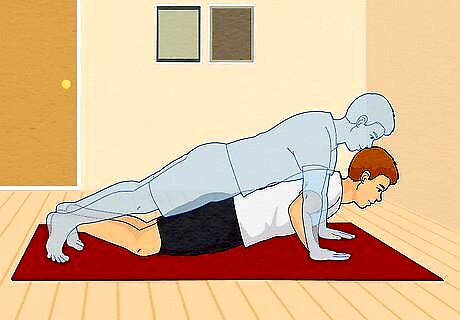
Try eccentric push-ups so you don't have to push yourself off the ground. Get on your hands and feet in the starting position like you’re about to do a regular push-up. Then, take about 4–8 seconds to slowly lower your body to the ground. Try your best to maintain control of your muscles the entire time so you don’t have any fast or jerky motions. When you reach the ground, put your knees down and comfortably get back into your starting position (then, try another rep!). Do 5 reps at first, but try doing more if you still feel comfortable. If doing eccentric push-ups on the floor is too difficult, try doing them on an incline instead.



















Comments
0 comment